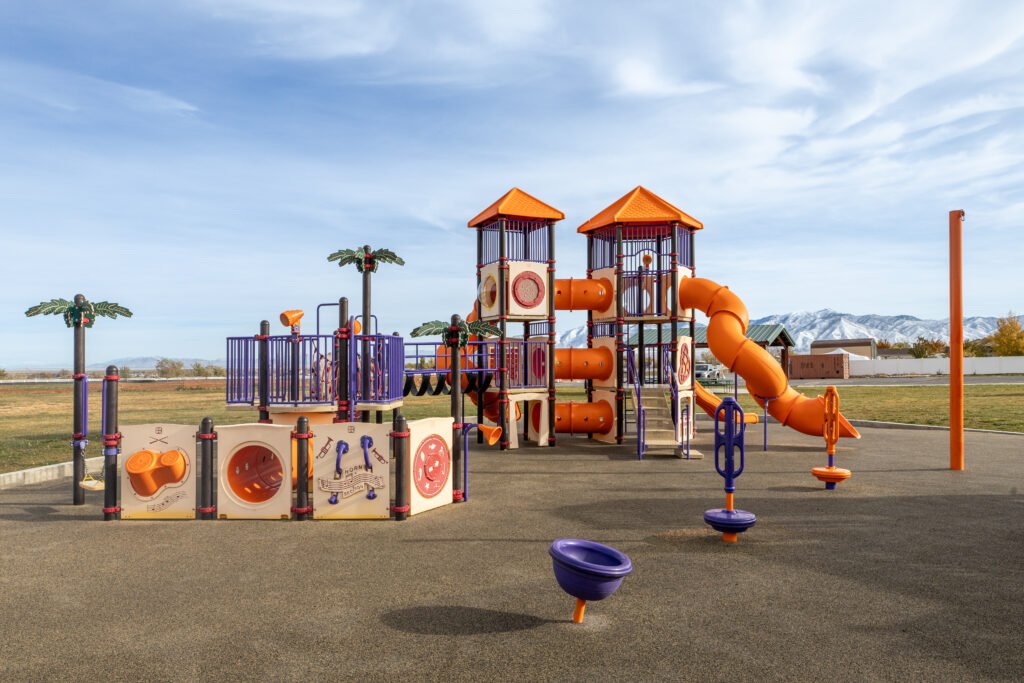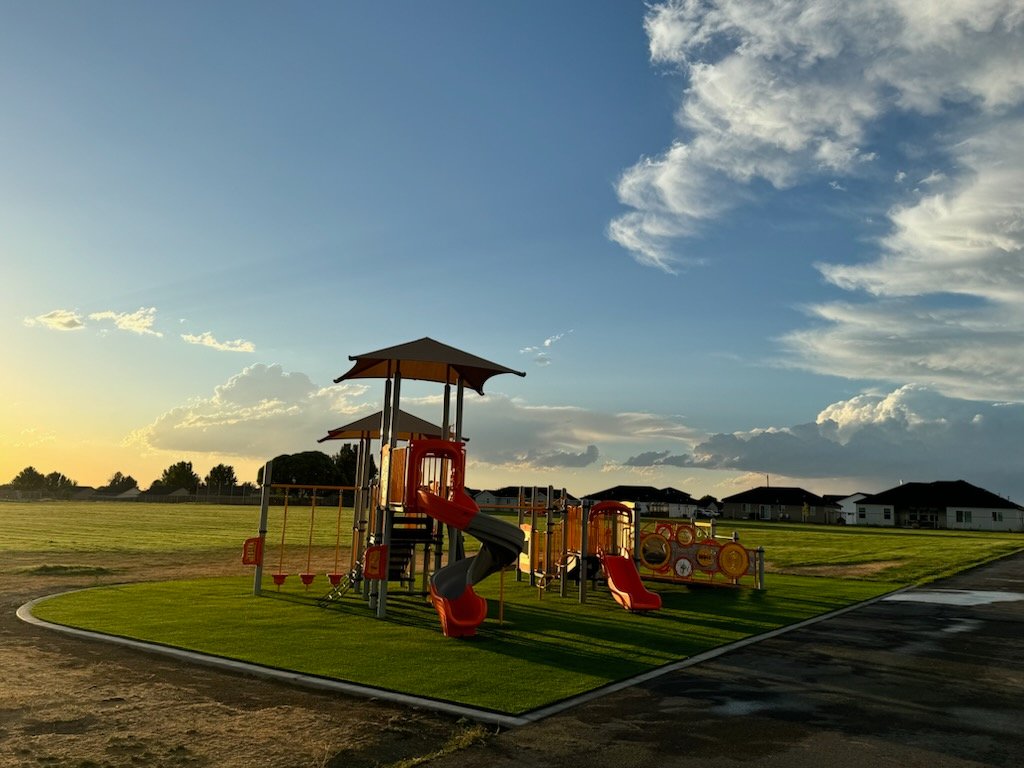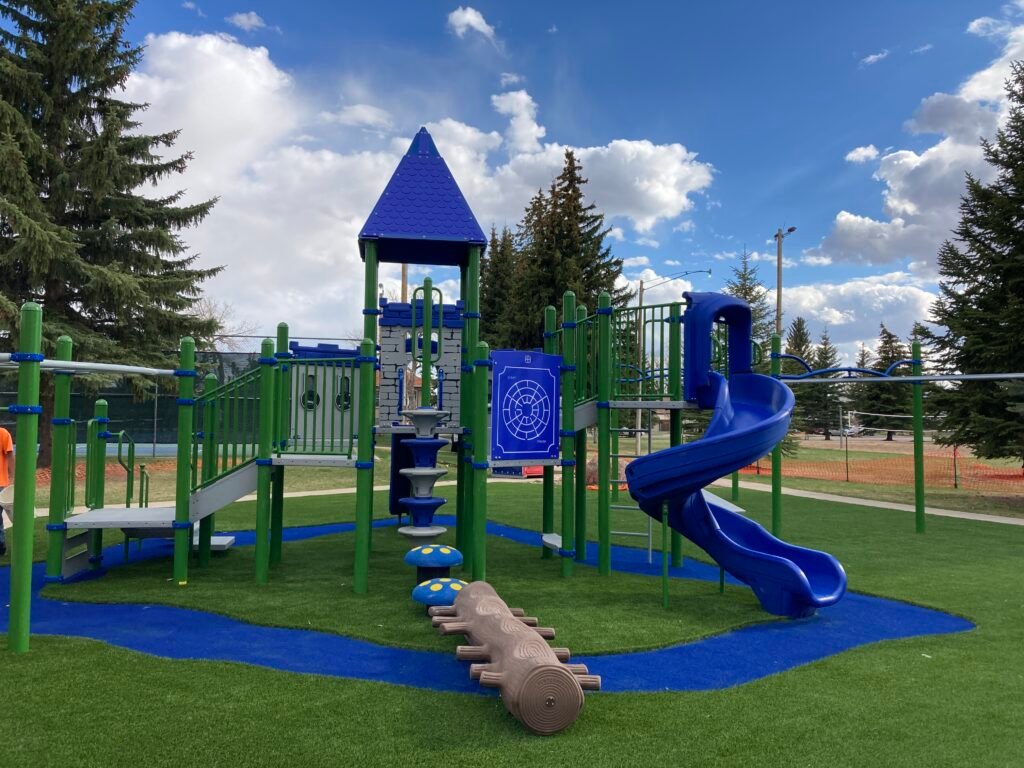PLAYGROUND SURFACING EXPECTATIONS AND MAINTENANCE - PART TWO
Are you choosing the right fall protection for your situation?
Now that we’ve covered loose-fill surfacing options in Part One, it's time to explore unitary surfacing solutions that offer different benefits and considerations. These materials have become increasingly popular due to their durability, low maintenance requirements, aesthetic appeal, and wheelchair accessibility. However, they also come with their own set of costs and expectations that are important to understand before making a decision.
The number one issue we see with purchasing these unitary options is the lack of understanding about the potential costs of maintenance. More on that below!
Unitary surfacing options are typically more permanent solutions, offering smooth, uniform surfaces that are often easier to maintain over time compared to loose-fill materials. But with that comes a higher initial investment and distinct maintenance needs.
In this second part of our series, we’ll take a deep dive into the most common types of unitary surfacing, explore their pros and cons, and provide you with practical insights to help you choose the best option for your playground's needs.
Whether you’re looking for a long-lasting surface that requires minimal upkeep or aiming to meet specific accessibility standards, unitary options might be the ideal choice for your project. Let’s explore these options further to ensure you’re making the right investment for your playground’s future.
POUR-IN-PLACE (PIP) OR BONDED RUBBER PLAYGROUND SURFACING
In the past five years, we’ve seen a significant shift toward unitary surfacing options. These products have been well-tested, and when installed correctly with a solid subbase, poured rubber surfaces offer durability and performance that can be a perfect fit for your playground needs.

PROS:
- Nearly all PIP and bonded rubber suppliers meet ASTM 1951 standards, ensuring these surfaces are accessible for children in wheelchairs. This makes them ideal for inclusive play environments.
- One of the standout benefits of PIP or bonded rubber is its seamless, smooth surface, which enhances the aesthetic of your playground. It's visually pleasing and offers an easy-to-clean finish.
- No ADA ramp is required, as there is also a seamless transition from surfacing to sidewalk
- PIP surfaces are highly customizable, allowing for a wide range of colors, logos, and images. This opens up endless possibilities to enhance your design or theme. Color variations can also aid children with visual impairments.
- When properly maintained, these surfaces are incredibly durable and long-lasting, outlasting many other surface types.
- Compared to loose-fill materials like wood chips or rubber mulch, PIP and bonded rubber require significantly less regular maintenance.
- These surfaces are designed to be porous, allowing for excellent drainage, which reduces the risk of water pooling on the surface.

CONS
- PIP and bonded rubber surfacing can be expensive. For larger areas, it can consume a significant portion of your budget, leaving less room for play equipment.
- A successful installation relies heavily on the subbase and installation quality. If either is subpar, the surface may not last as long as expected.
- Regular conditioning (urethane top coat) is required to preserve the integrity of the rubber. Many people overlook this recurring cost, but without it, the rubber can become brittle and start to degrade.
- Some color choices can cause the surface to become very hot in direct sunlight, which may limit playtime during the summer months.
- Extreme weather conditions can cause the rubber to expand and contract, potentially causing the surface to pull away from the concrete borders over time (proper maintenance can mitigate this).
- Bonded rubber tends to always have some degree of mulch pieces that escape into surrounding grass or get caught under playground equipment, creating a potential mess.
- If the surface needs repairs, the patchwork will likely be noticeable over time, as the rubber fades and ages.
MAINTENANCE
To maximize the lifespan of your PIP or bonded rubber, apply a urethane top coat annually or at least every two years. This is the most common oversight when installing unitary rubber surfacing. Without proper conditioning, the rubber can degrade, leading to cracks or surface breakdown. We highly recommend hiring a professional for this job, as the chemicals used can be toxic in high concentrations.
Additionally, use a leaf blower regularly to remove debris from the surface, preventing clogging in the porous material.
EXPECTATIONS
- Expect to pay between $25–$40 per square foot (installed), depending on fall height and whether you choose a two-pour system (PIP) or a single-pour system (bonded rubber). This does not include site prep expenses.
- Budget $2,000–$5,000 every one to two years for conditioning, especially for PIP. If your maintenance team is capable of doing the work, you may be able to save on labor costs, though we still recommend professional application due to the potential health risks involved.
- Be sure to thoroughly understand the warranty terms and get multiple quotes for post-installation maintenance. You may be able to delay conditioning for a few years, but eventually, the surface will degrade without it, leading to cracking, pulling away from borders, or holes.
- Hire a vetted and reputable installer who can back up with installations with warranties.
- Ensure your subbase is compacted to 95% before installation, and have it tested if needed.
SYNTHETIC TURF SURFACING
Synthetic turf is by far my favorite unitary surfacing option, and its popularity has surged in recent years. It’s not only more affordable than unitary rubber products but also requires much less long-term maintenance. If you partner with a reliable installer, synthetic turf could become your go-to surfacing option for playground projects.

PROS:
- Most commercial turf suppliers carry ASTM 1951-certified turf, ensuring wheelchair accessibility for inclusive play environments.
- Although synthetic turf requires seams, if installed correctly, they are virtually invisible.
- Turf is typically the most cost-effective unitary surfacing option available.
- You can choose approved foam padding or rubber buffings beneath the turf to meet fall height requirements (we recommend rubber buffings for specific applications).
- Turf provides a natural, green look that enhances the visual appeal of playgrounds.
- Turf can also be customized with different colors, textures, logos, images, and themes to suit the playground design.
- If repairs are needed, turf patchwork is generally less noticeable than with rubber products.
- Minimal long-term maintenance is required, and any upkeep needed is typically very cost-effective.
CONS:

- Turf can become extremely hot, often 20 degrees hotter than the surrounding air temperature, which can be uncomfortable in the summer.
- Some turf products may contain PFOAs (perfluorooctanoic acid), a known toxin. Be sure to choose a turf supplier that tests and guarantees their products are free from these chemicals.
- A successful turf installation depends heavily on the subbase and the installer’s expertise. If either is subpar, the surface may not last as long as expected.
- Quality varies, so make sure to select turf with appropriate pile heights and weight for your specific needs.
- Freight costs for synthetic turf can be significant, especially for larger projects.
MAINTENANCE:
- Synthetic turf requires little to no maintenance in playground settings (dog parks are an exception).
- To keep the grass blades upright and infill evenly distributed, we recommend “blooming” the turf regularly. This involves using an industrial-strength rotary brush to lift and refresh the surface.
- Use a leaf blower or blooming brush to remove debris and maintain a clean surface.
- Ask your turf installer if and when additional infill may be needed to maintain the turf’s performance.
EXPECTATIONS:
- Expect to pay between $16-$30 per sq/ft installed and with impact attenuation padding, depending on the grass and supplier you select. This does not include site prep expenses.
- If you plan on maintaining your turf regularly, consider purchasing a commercial brush, which starts as low as $250 at home improvement stores like Home Depot or Lowe’s
- Be sure to thoroughly understand the warranty terms of your turf and hire a reputable installer who offers an installation warranty.
- Ensure your subbase is compacted to at least 95% before installation. If necessary, have it tested to ensure the correct base density. We recommend a ¾ road base mix with french drains as the most reliable sub-base surfacing.

Choosing the right safety surfacing for your playground is crucial in ensuring the play area's safety and longevity. Whether you opt for synthetic turf, pour-in-place rubber, or loose fill surfacing, each option has its benefits and drawbacks.
Synthetic turf offers a natural look with low maintenance and cost-effective long-term upkeep, but it can get hot in the summer months. Pour-in-place rubber, while highly durable and customizable, requires regular maintenance and can be a significant upfront and long-term investment. Loose-fill options like wood chips and rubber mulch are affordable, but they need frequent replenishing. Ultimately, the right choice depends on your specific needs—considering budget, aesthetics, safety requirements, and long-term maintenance. Always be sure to partner with experienced installers and suppliers (like Luckydog Recreation!) who can guide you in selecting the best surfacing for your playground environment.
To learn more about our surfacing offerings or to get a quote, reach out to your creative play designer here: https://luckydogrecreation.com/contact